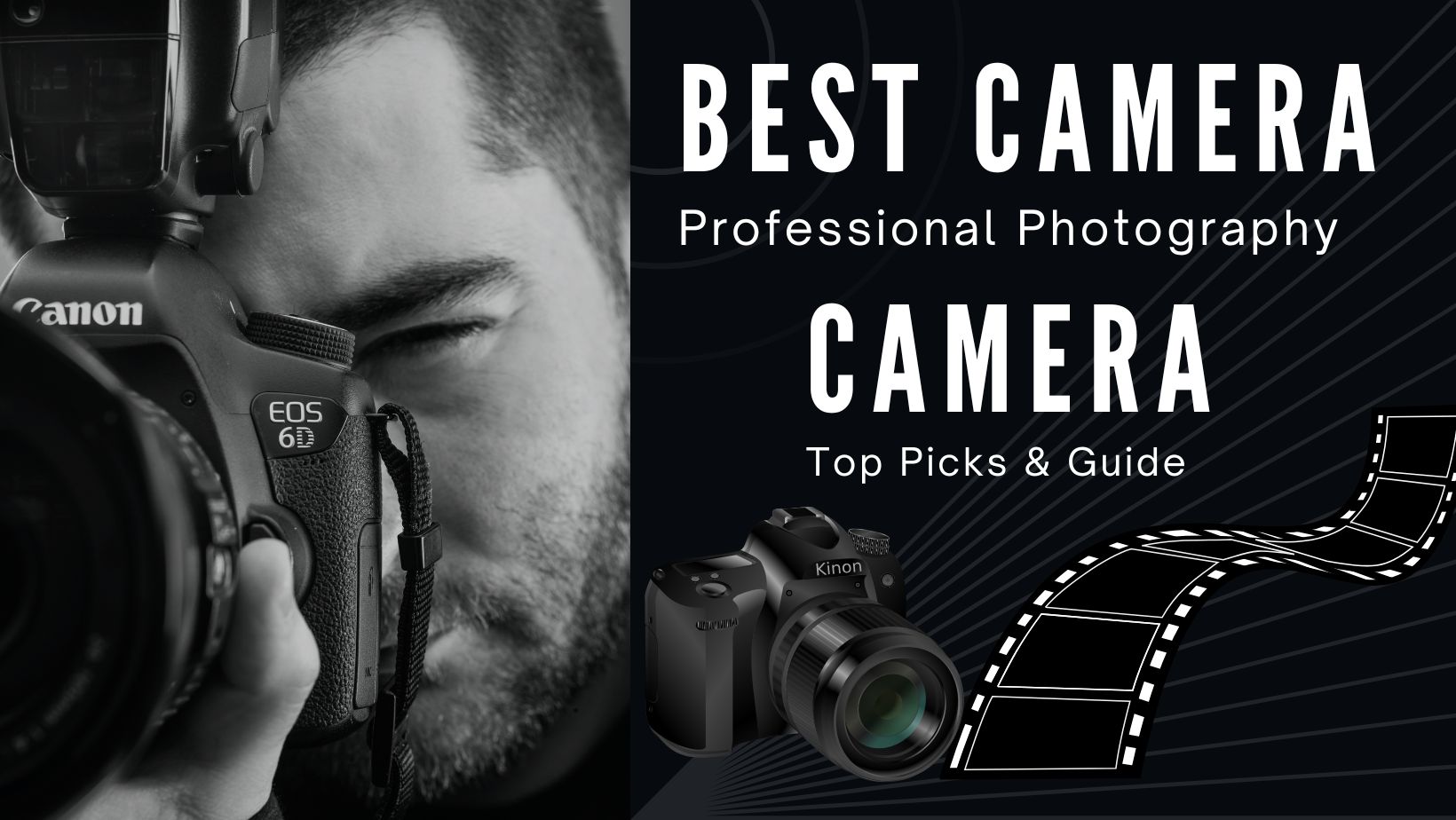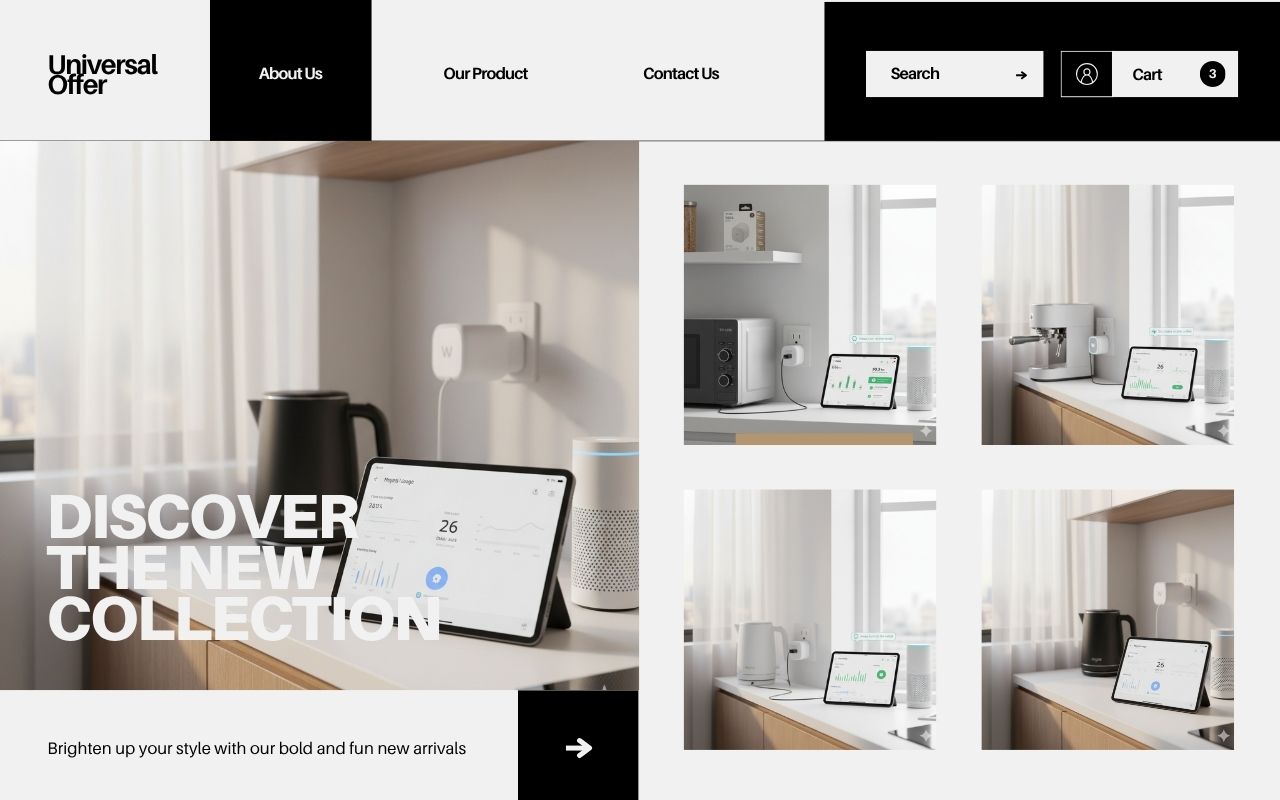The Ultimate Guide to the Best Camera for Professional Photography, 2025
Introduction
Best Camera for Professional Photography 2025 – Top Picks & Guide: One of the most crucial choices for any photographer is selecting the best camera for professional work. Whether you specialize in commercial work, landscapes, portraits, or weddings, having the right equipment can make a big difference. From more traditional DSLR cameras to state-of-the-art mirrorless systems that combine high resolution, speed, and portability, professional photographers will have more options than ever in 2025.
In addition to comparing various models and analyzing what constitutes a “professional” camera, this guide will highlight the best cameras for each type of photography.
What Qualifies a Professional Photographer?
Certain cameras are not suitable for use in a work environment. Professional cameras differ from entry-level models primarily in the following ways:
-
High-Resolution Sensors: Sharper images produced by sensors with more megapixels are crucial for commercial projects and producing large prints.
-
Burst shooting and fast autofocus are great features for action photography, sports events, and weddings.
-
Good Low-Light Performance: Even in poorly lit areas, professional cameras produce excellent results.
-
Resilient & Weather-Sealed Body: Designed to resist harsh weather and outdoor photography.
-
Advanced Features: AI-powered autofocus, Wi-Fi connectivity, in-body image stabilization, 4K/8K video recording, and dual card slots for immediate backup.
The Best Categories for Professional Cameras
1. The Greatest Expert Camera for Outdoor and Studio Photography
Accuracy and portability are essential for a camera that can be used for both outdoor and studio sessions.
Sony A7R V, Canon EOS R5, and Nikon Z8 are the top choices.
2. Professional Photographers’ High-Resolution Mirrorless Camera
The professional market is dominated by mirrorless cameras because of their small size and high resolution.
A7R V (61MP), EOS R5 (45MP), and Fujifilm GFX 100S (102MP medium format) are the top choices.
3. Top DSLR Camera for Expert Wedding Photographers
Reliable cameras with dual card slots and good low-light performance are essential for wedding photographers.
Nikon D850, Canon EOS 5D Mark IV, and Canon EOS 90D (a more affordable option) are the top choices.
4. The Best Camera for Expert Commercial and Product Photography
Accurate color reproduction and high megapixels are essential for product and commercial shoots.
The best choices are the Nikon Z7 II, Fujifilm GFX 100S, and Sony A7R V.
5. Top Professional Camera for Portrait and Fashion Photography
Photographers of fashion and portraits require cameras that can capture skin tones with exquisite detail and beauty.
Nikon Z6 II, Sony A7 IV, and Canon EOS R6 Mark II are the top choices.
6. Using a Full Frame Camera for Expert Landscape Photography
Wide dynamic range and full-frame sensors are advantageous for landscape photographers.
Nikon Z8, Sony A7R V, and Canon EOS R5 are the top choices.
7. Top Camera for Action and Sports Photography Professionals
Excellent autofocus tracking and quick burst shooting are essential for sports photography.
Canon EOS R3, Nikon Z9, and Sony A9 III are the top choices.
8. High-end camera with 4K features for photography and video
Professionals who want to take pictures and record videos will love hybrid cameras.
Sony A7S III, Canon EOS R5, and Panasonic Lumix S5 II are the top choices.
9. Top Professional Camera at an Affordable Price for Novices and Professionals
Not every professional requires the priciest equipment. Some less expensive options still have professional features.
Nikon Z5, Sony A7 III, and Canon EOS R10 are the top choices.
10. The Best Camera for Expert Travel and Wildlife Photographers
Long-lasting, lightweight cameras with extended battery life are essential for wildlife and travel photographers.
Nikon Z8, Sony A1, and Canon EOS R3 are the top choices.
Table of Comparisons: Full Frame, Mirrorless, and DSLR
| Feature | DSLR Cameras | Mirrorless Cameras | Full-Frame Cameras |
|---|---|---|---|
| Size & Weight | Larger | Compact & Light | Varies |
| Autofocus Speed | Good | Excellent (AI AF) | Excellent |
| Battery Life | Strong | Moderate | Good |
| Lens Options | Wide Range | Growing Rapidly | Premium Choices |
| Low-Light Performance | Good | Excellent | Best Overall |
| Best For | Weddings, Events | Travel, Studio, All-round | Landscapes, Commercial Work |
| Camera Model | Type | Sensor | Megapixels | Video | Burst FPS | Pros | Cons | Best Use Case |
|---|---|---|---|---|---|---|---|---|
| Sony A7R V | Mirrorless | Full-Frame | 61MP | 8K | 10 | Ultra-high resolution, excellent autofocus, lightweight | Expensive, shorter battery life, complex for beginners | Landscapes, Studio, Commercial |
| Canon EOS R5 | Mirrorless | Full-Frame | 45MP | 8K | 20 | Great autofocus, color science, versatile | Overheating in 8K, expensive lenses | Portrait, Weddings, Commercial |
| Nikon Z8 | Mirrorless | Full-Frame | 45.7MP | 8K | 20 | Excellent low-light, fast shooting, versatile | Heavy, high price, limited lenses | Landscapes, Sports, Travel |
| Canon EOS 5D Mark IV | DSLR | Full-Frame | 30.4MP | 4K | 7 | Reliable, strong low-light, wide lens range | Heavy, slower burst, no 4K 60fps | Weddings, Studio, Portrait |
| Nikon D850 | DSLR | Full-Frame | 45.7MP | 4K | 7 | Excellent image quality, battery life, durability | Heavy, slower autofocus, expensive | Studio, Landscape, Commercial |
| Sony A9 III | Mirrorless | Full-Frame | 24MP | 4K | 20 | Ultra-fast burst, excellent tracking, lightweight | Lower resolution, expensive, limited telephoto lenses | Sports, Wildlife, Action |
| Canon EOS R6 | Mirrorless | Full-Frame | 20MP | 4K | 12 | Low-light performance, eye tracking, portable | Low resolution, average battery, pricey | Portrait, Fashion, Travel |
| Fujifilm GFX 100S | Medium Format | Medium Format | 102MP | 4K | 5 | Outstanding quality, color, compact medium format | Very expensive, slower AF, limited lenses | Studio, Product, Commercial |
| Panasonic Lumix S5 II | Mirrorless | Full-Frame | 24MP | 4K | 10 | Great hybrid photo + video, compact | Slower AF, limited lenses, lower resolution | Video + Photography, Travel |
| Canon EOS R10 | Mirrorless | APS-C | 24MP | 4K | 15 | Affordable, lightweight, good autofocus | APS-C sensor, low-light limits, not for large prints | Travel, Beginner Pros, Budget Professional |
1. Sony A7R V (Mirrorless)
Pros:
-
61MP full-frame sensor for ultra-high resolution
-
Excellent autofocus with real-time eye tracking
-
8K video recording support
-
Lightweight compared to DSLR
Cons:
-
Expensive
-
Shorter battery life than DSLRs
-
Steep learning curve for beginners
2. Canon EOS R5 (Mirrorless)
Pros:
-
45MP full-frame sensor
-
Excellent autofocus and dual-pixel AF II
-
8K video recording capability
-
Great for portraits, weddings, and commercial shoots
Cons:
-
Overheating issues during long 8K video recording
-
Expensive lenses
-
Complex menu system for new users
3. Nikon Z8 (Mirrorless)
Pros:
-
45.7MP full-frame sensor
-
Incredible low-light performance
-
Fast continuous shooting (FPS)
-
Great for landscapes and sports photography
Cons:
-
Heavy for travel photographers
-
High price point
-
Limited lens selection compared to Canon/Sony
4. Canon EOS 5D Mark IV (DSLR)
Pros:
-
Proven DSLR reliability
-
Excellent color science
-
Strong low-light performance
-
Wide range of compatible lenses
Cons:
-
Heavier body
-
Slower burst rate compared to mirrorless
-
No 4K 60fps video
5. Nikon D850 (DSLR)
Pros:
-
45.7MP full-frame sensor
-
Excellent dynamic range and image quality
-
Robust build quality
-
Long battery life
Cons:
-
Large and heavy
-
Autofocus less advanced than newer mirrorless models
-
Expensive
6. Sony A9 III (Mirrorless – Sports & Action)
Pros:
-
Ultra-fast 20 FPS continuous shooting
-
Excellent tracking autofocus
-
Great for sports and wildlife
-
Lightweight and compact
Cons:
-
Expensive
-
Lower resolution (24MP) for large prints
-
Limited lens availability for extreme telephoto
7. Canon EOS R6 (Mirrorless – Portrait/Fashion)
Pros:
-
Excellent low-light performance
-
Dual Pixel AF II with eye tracking
-
Lightweight and portable
-
4K video recording
Cons:
-
20MP resolution may be low for large commercial prints
-
Expensive compared to entry-level cameras
-
Battery life average
8. Fujifilm GFX 100S (Medium Format)
Pros:
-
102MP medium format sensor
-
Outstanding image quality and color
-
Great for product, commercial, and studio work
-
Compact for medium format standards
Cons:
-
Very expensive
-
Limited lens selection
-
Slower autofocus than top-tier full-frame mirrorless
9. Panasonic Lumix S5 II (Hybrid Photo + Video)
Pros:
-
24MP full-frame sensor
-
Excellent 4K video features
-
Lightweight and compact
-
Good for hybrid photographers (photo + video)
Cons:
-
Autofocus not as fast as Sony/Canon
-
Limited lens ecosystem
-
Low-resolution sensor for professional large prints
10. Canon EOS R10 (Budget-Friendly Professional)
Pros:
-
Affordable professional-grade mirrorless
-
Good autofocus with eye tracking
-
Lightweight and compact
-
Good for travel and beginner professionals
Cons:
-
APS-C sensor (not full-frame)
-
Limited low-light performance
-
Less suitable for commercial large-format prints
How to Pick the Best Camera for Professional Photography: A Buying Guide
-
Establish Your Budget Professional cameras can cost anywhere from $1,000 to over $8,000.
-
Complement Your Genre Sports require speed, landscapes require resolution, and weddings require low light power.
-
Remember Lenses: In many situations, lenses are more important than the camera body.
-
Examine the Brand Ecosystem; each of Canon, Sony, Nikon, and Fujifilm has special benefits.
-
Invest in a system that will last by providing future-proof upgrades and accessories.
Most Common Questions
Q1. Which camera is ideal for someone starting out as a professional?
Canon EOS R10 and Sony A7 III are excellent entry-level professional choices.
Q2. Is the DSLR more future-proof than the Mirrorless?
The speed, portability, and cutting-edge technology of mirrorless cameras make them the cameras of the future.
Q3. How much should you invest in a professional camera?
Expect to spend at least $2,000–$3,000 for a complete professional setup (camera + lens).
Q4. Which brand is best for professional photography?
The industry leaders are Canon, Sony, and Nikon, but Fujifilm has superior color accuracy.
Conclusion
Your niche and financial constraints will determine which camera is best for professional photography. Both the Sony A7R V and the Canon EOS R5 are excellent options if you’re looking for the best all-arounder in 2025. While the Canon EOS R10 and Nikon Z5 offer great value for professionals on a tight budget, the Sony A9 III is the best option for sports and action.
In the end, your abilities, imagination, and lens selections will be more important than the camera itself. You can take breathtaking pictures if you have the right equipment.


